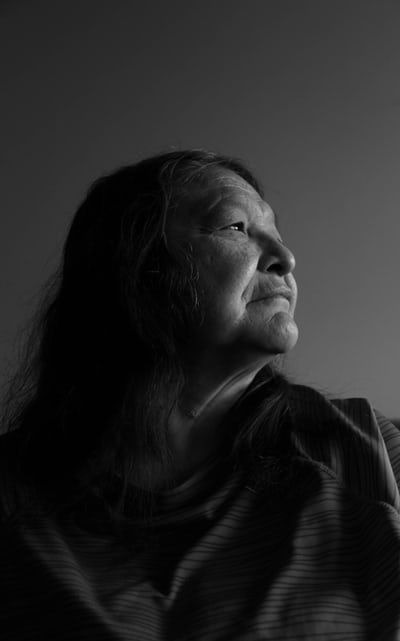Editorial | May 5th, 2020

by Sofia Makarova and Massimo Sassi
The global pandemic is an incredibly challenging time for many. Nearlyone in every three Americans’ jobs have been affected, whether a temporary layoff, a permanent job loss, or a reduction in hours and/or pay. Most universities and schools haveclosed down across the country in hopes to slow the spread of the pandemic, causing professors, teachers, and students alike to adapt to online instruction. As of today, the number of infections is above thethree million mark worldwide, and the death toll has climbed to a staggering 228,000.
Although COVID-19 has created tremendous difficulties for many across the world, the sad reality of the pandemic is that some will be affected much more than others. This certainly is the truth for Native American communities across the United States.Pre-existing medical conditions,inadequate access to health resources, andpovertyhave all added additional hurdles to the Native community’s struggle with the coronavirus. However, the increased difficulty that marginalized communities may face during a pandemic are not solely indicative of the present moment—these struggles represent a history of imperialism and an incompatibility with Western capitalism. This causes great losses in culturally significant practices and resilience, and in turn, a lack of proper access to necessary resources that would not only prepare a given society better for a pandemic, but also promote their long-term wellbeing. In order to understand the current disaster of COVID-19 in Native American groups and what could be changed in order to better improve the overall health of these communities, it is important to first go back in time.
A History of Marginalization
Poverty born out of colonial exploitation of Indigenous groups in the United States has played a large role in the current capability for Native American communities to respond to the COVID-19 pandemic. Perceived as “savages” upon first contact with European Americans, Native Americans have undergone great oppression since the 15th century, both through processes of genocide: the destruction of people, and ethnocide: the destruction of culture. One large motivation for the destruction of indigenous groups and cultures in the early United States was the desire for land and resources. As Richard Robbins and Rachel Dowty write in their book, Global Problems and the Culture of Capitalism, the “frontier,” or “an area perceived to be abundant in natural resources that can be easily exploited but seems not to be controlled by a nation-state” was established in order to justify violating prior property rights that Indigenous groups may have held. The view that Native Americans were “savages” that needed to be “tamed,” combined with the Western expansionist desire for land and resources, justified the massive genocide of the Native population, which was estimated to havedecreasedfrom 12 million in 1500 to around 237,000 in 1900, and subsequent loss of land totaling more than1.5 billion acres.
After destroying the autonomy of Native American groups in order to gain control of land and resources, Western powers sought to destroy Indigenous culture through ethnocide. Ethnocide took many different forms, from boarding schools that intended to eradicate the language and culture of Native American groups, to expansion of government control, both directly and indirectly; yet, the end goal was always the same: to destroy indigenous culture and assimilate Native Americans to Western ways of life. As Denise Lajimodiere and Andrea Carmen state on behalf of the National Native American Boarding School Healing Coalition and the International Indian Treaty Council, “US Boarding School policies severely impacted the thousands of children who experienced forced removal from their parents, families, and communities and the brutal physical, sexual, cultural, spiritual, and emotional abuse that took place in the government mandated schools.” With the forced attempt to assimilate Native American groups to Western culture also came the attempt to integrate them into the national economy, which often took the form of violence, such as slavery and forced labor, under the guise of “economic development.”
Ultimately, the drastic losses of lives, land, and culture throughout the period of colonization in the United States contributed greatly to current marginalization of Native American groups. According to Gretchen Mueller Bataille, provost of the College of Letters and Science at UC-Santa Barbara, and Charles L.P. Silet, Professor of English at Iowa State University, “the most noteworthy and glaring product of economic exploitation perpetrated by white society has been the expropriation of Indian lands.” Through loss of access to land and resources that they once had, Native Americans were put at an incredible economic disadvantage, which is still apparent today. Native Americans have the highest unemployment rate (6.6% compared to 3.9% of the total U.S. population) and the highest poverty rate (28.3%) in the United States. However, the marginalization and difficulties that Native Americans face in light of the pandemic are not simply a result of their failure to succeed in the system of American capitalism. Rather, there is a complex relationship between indigenous groups and the culture of capitalism which has led to less sociocultural and economic agency—ultimately limiting access to necessary resources.
Access and Property
The spread of capitalism has proved to be devastating for Indigenous people, as their culture and social-ecological systems are innately incompatible with those of capitalism. Although the exploitation of such groups is no longer as explicit as it once was, the effects and implicit mechanisms for marginalization prove to be as strong as ever. According Robbins and Dowty, at a fundamental level, “...Tribes represent small-scale, decentralized societies with long-range management strategies, whereas states represent societies with centralized management systems whose goal is to extract resources for short-term profits for investors with little concern for the environmental consequences.” Naturally, the far larger, profit-driven society of the two has the means and motivation to exploit the other without regard for the people it swallows. The inability for the two to co-exist leaves Native Americans and other indigenous groups more susceptible to the effects of capitalism. Therefore, if Native Americans refuse to play into the capitalist systems and institutions, they are also precluded from the benefits that could protect them from, say, a global pandemic. Such a system will use any tactic at its disposal to justify “development” and the spread of capitalism, including de-humanizing its victims.
Along with this, American capitalism actively attacked Native American cultural and social institutions which served their society; for example, the extended family, which was criticized on the basis of being an impediment to economic growth in America. The assumption of one system’s institutions being superior to the other is biased and distinctly ethnocentric—it refuses to see how differing practices, such as the dependence on extended family, may be economically efficient and sustainable for a given society. Additionally, the push to integrate the Native Americans into the capitalist economy through forced labor, taxes, and relocation were all justified by a twisted take on morality—depriving Native Americans of their power in American society.
Although Native Americans may seem to have equal rights in American society, along with their own allotted “property” in an attempt to make up for stolen land, the reality is far different. Property, as defined by Jesse Ribot and Nancy Peluso in their paper, A Theory of Access, is a “bundle of rights” while access is defined as a “bundle of powers.” While the Native American groups in America may have property rights, they are severely lacking in access, making their power virtually meaningless in our society. For example, Native Americans may have rights to healthcare services provided by the Indian Health Service (IHS), yet the U.S. Congress has the power to provide federal funding. Consequently, the IHS has beenconsistently underfunded. The loss of real power, or autonomy, correlates to inadequate healthcare, development of pre-existing health conditions, and a disproportionate economic burden. These underlying inequalities compound tenfold in times of crisis, as is the case with the novel coronavirus.
More Than a Pandemic
During a pandemic, it is evident that marginalized groups, such as Native American communities, suffer at exponentially greater rates than the population of the United States as a whole. However, it can be easy to overlook the true reasons, and perhaps possible resolutions, for this issue. Pre-pandemic, discrepancies in healthcare access, inherently caused by an incompatibility with the culture of capitalism, could be overlooked and written off as anomalies. But along with mounting cases and rising death rates, the pandemic brings clarity to the severe gaps in access and wealth within our society. For this reason, it is now more important than ever to keep Native Americans—as well as other marginalized groups such as African Americans and Hispanics that suffer from structural violence—in the national dialogue. Despite the fact that everyone faces their own difficulties during this time, some do have it far worse than others. It is important for those of us who have not lost our jobs, who have enough income to go without work for a couple months, who have the opportunity to continue their job or education online, to use our privilege to speak up about important societal issues. Our collective voice could help shift Native community’s agency from a bundle of rights to a bundle of powers. By doing so, Native Americans would not simply have the right to use certain systems, such as healthcare, but they would have sovereignty over such systems that are so important in a given society. This change would be a crucial start in transforming the drastic inequities present in the culture of capitalism. One can hope that, despite all of the pain, suffering, and uncertainty the pandemic has caused, this will be a pivotal time in history in which people realize that we live in and perpetrate a system of injustice. A system where people continue to lose their lives because of exploitation and inequality. A system that needs to change.
January 15th 2026
December 18th 2025
November 18th 2025
October 15th 2025
September 16th 2025
_(1)_(1)_(1)_(1)__293px-wide.jpg)
_(1)__293px-wide.jpg)
_(1)_(1)_(1)_(1)__293px-wide.jpg)

_(1)__293px-wide.jpg)
